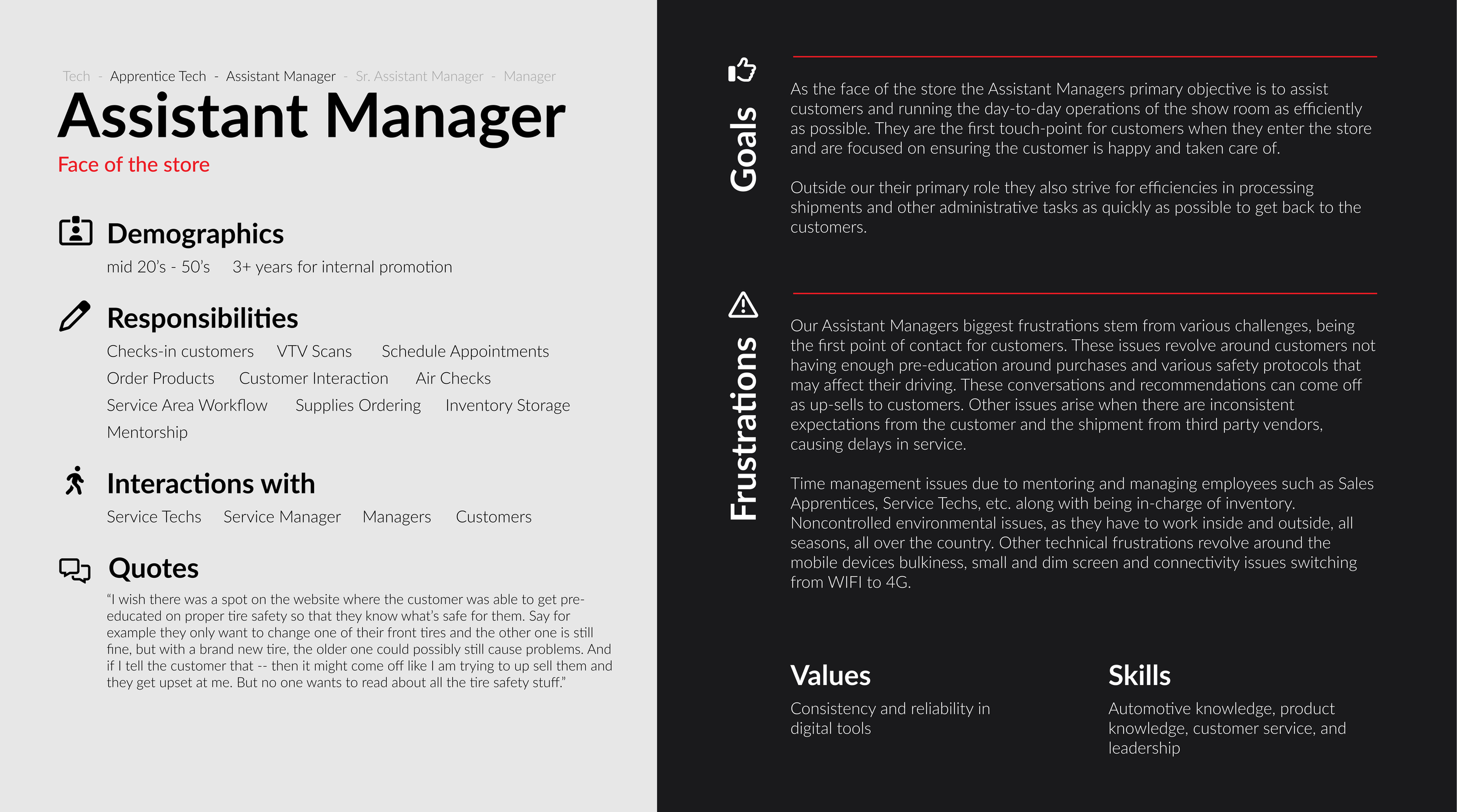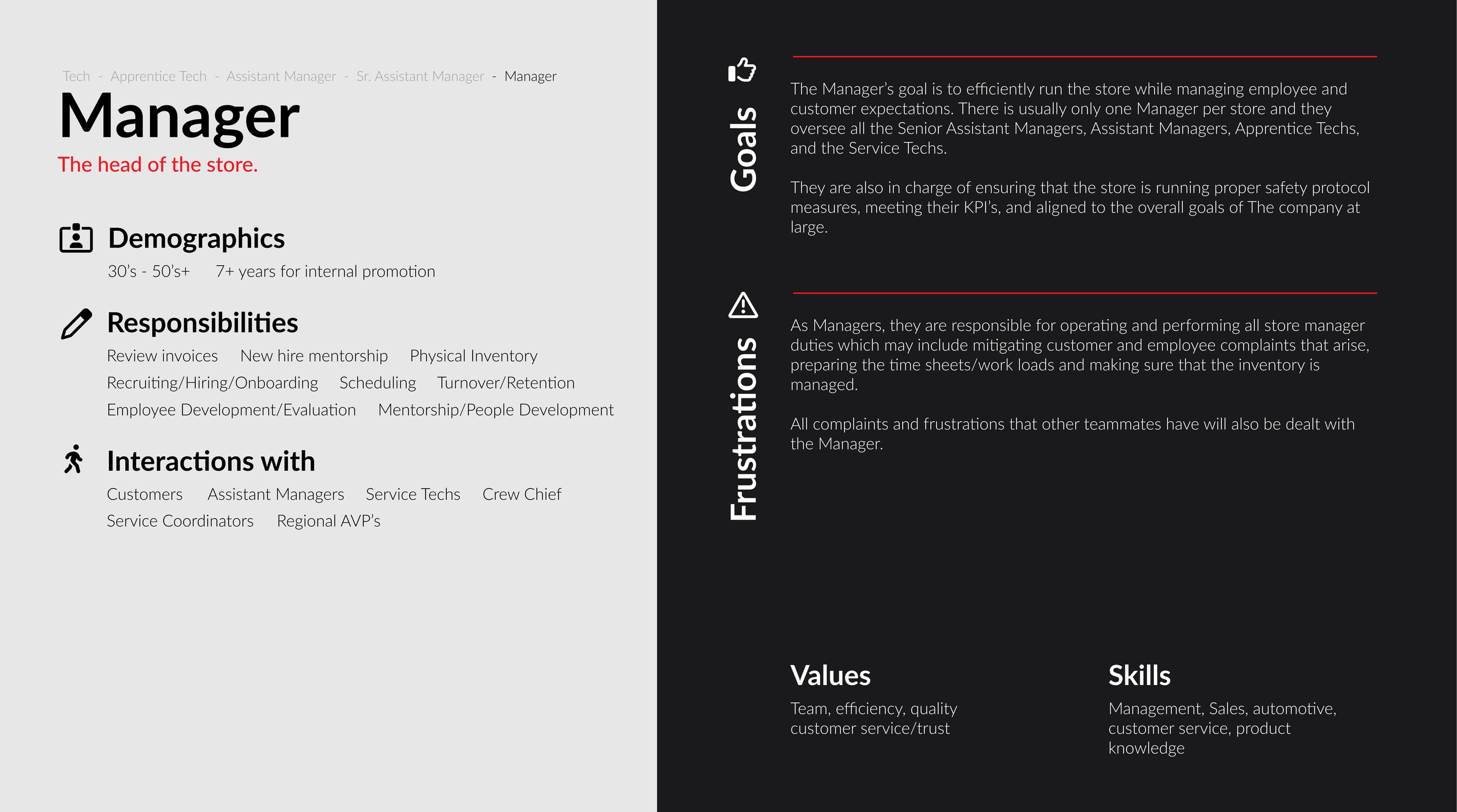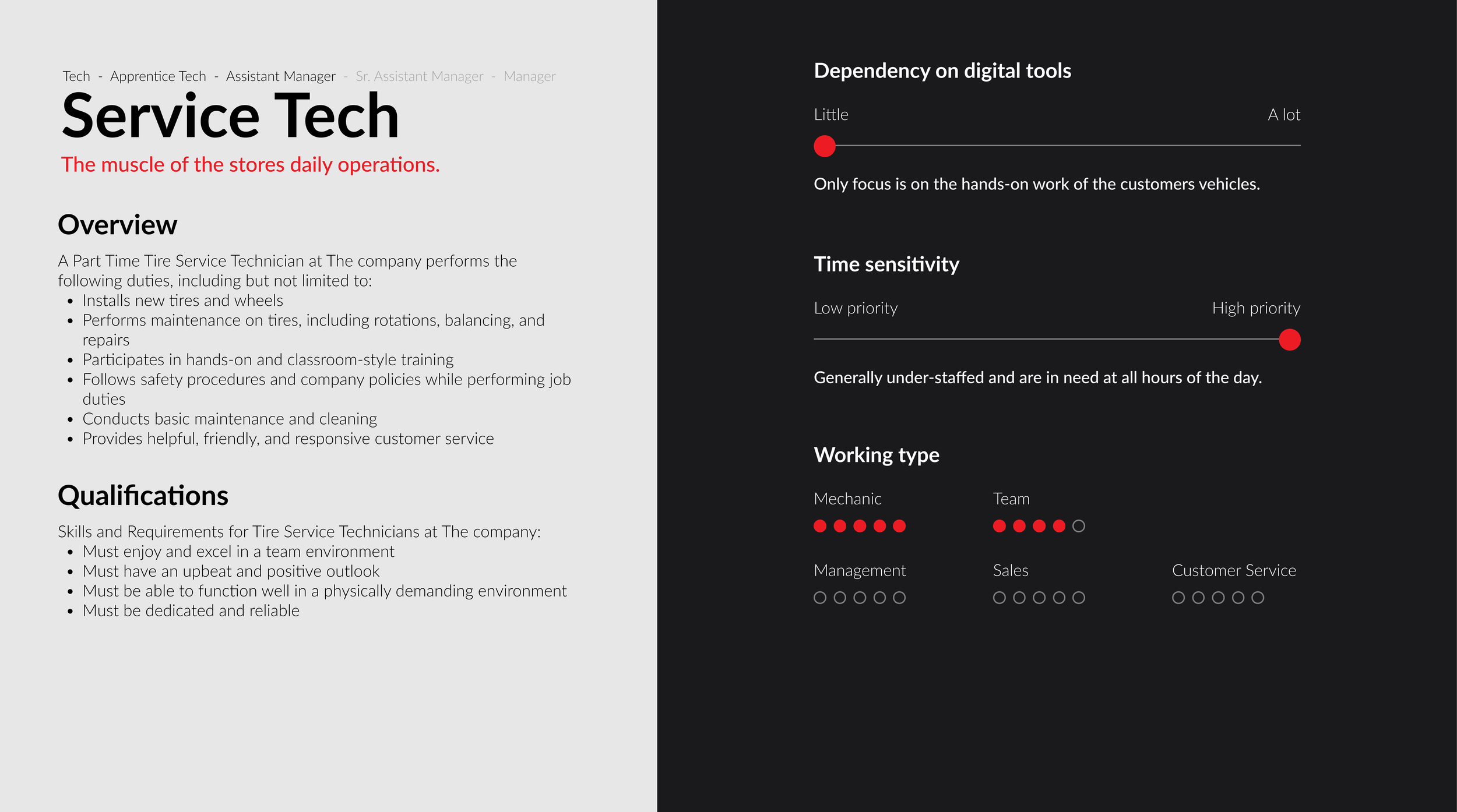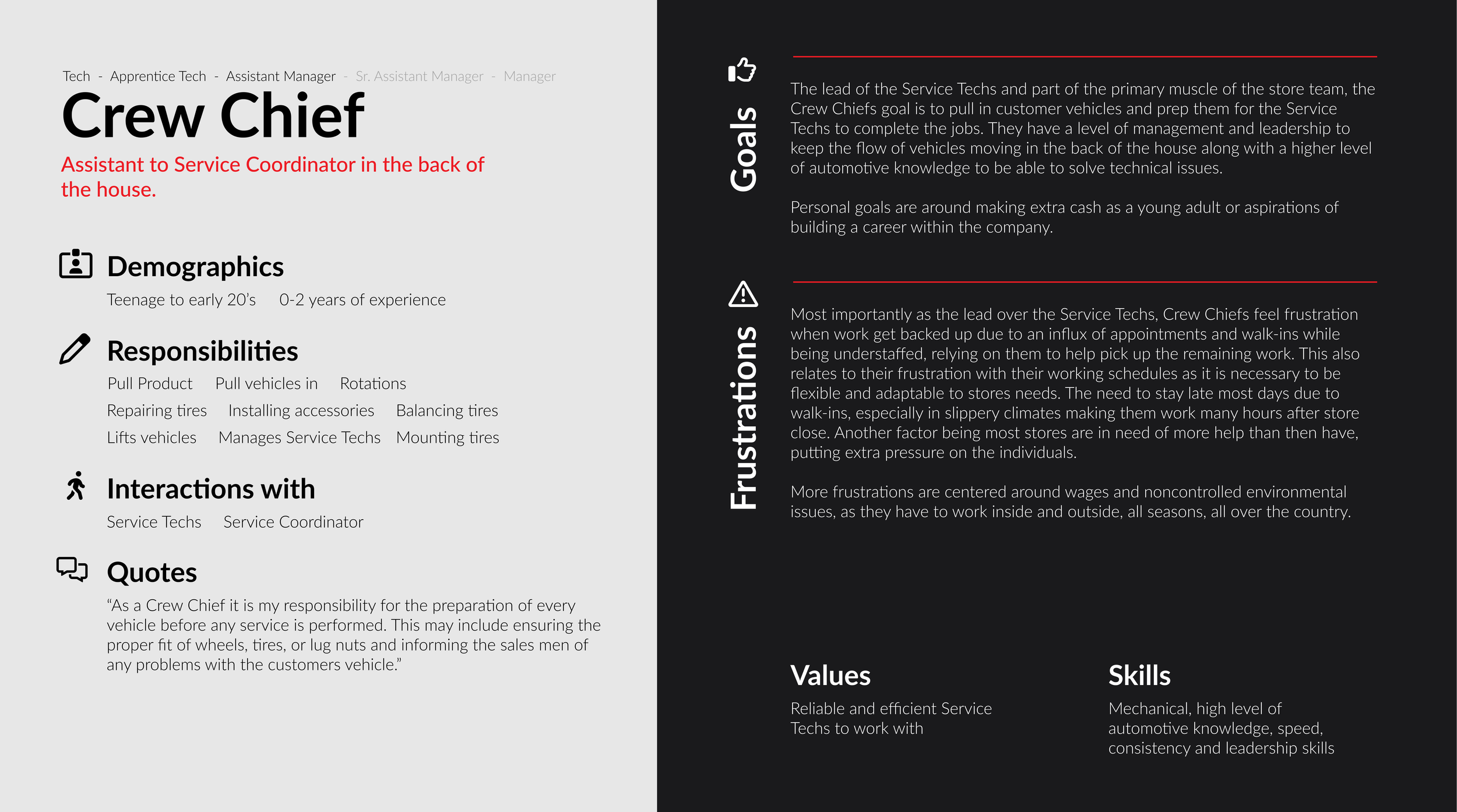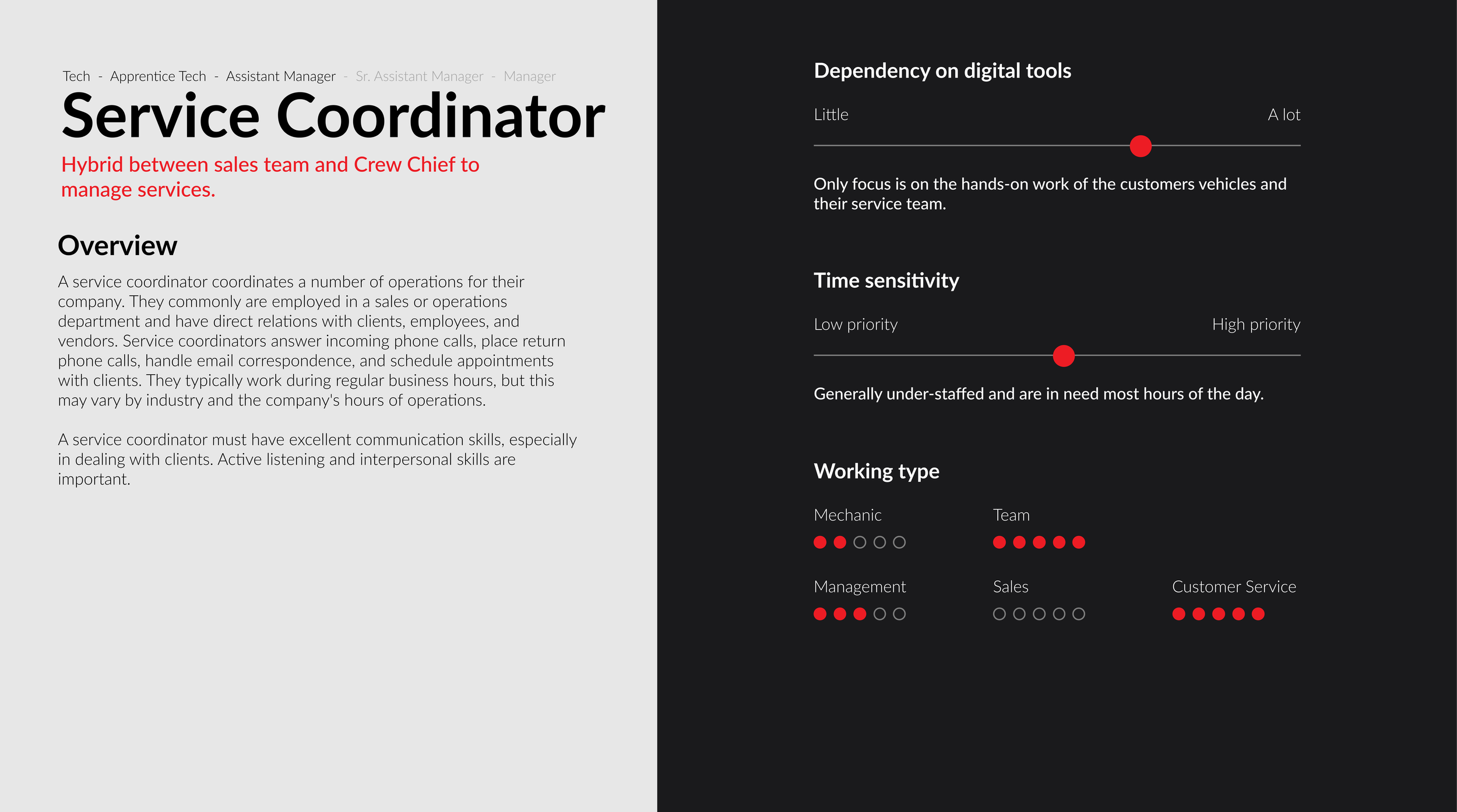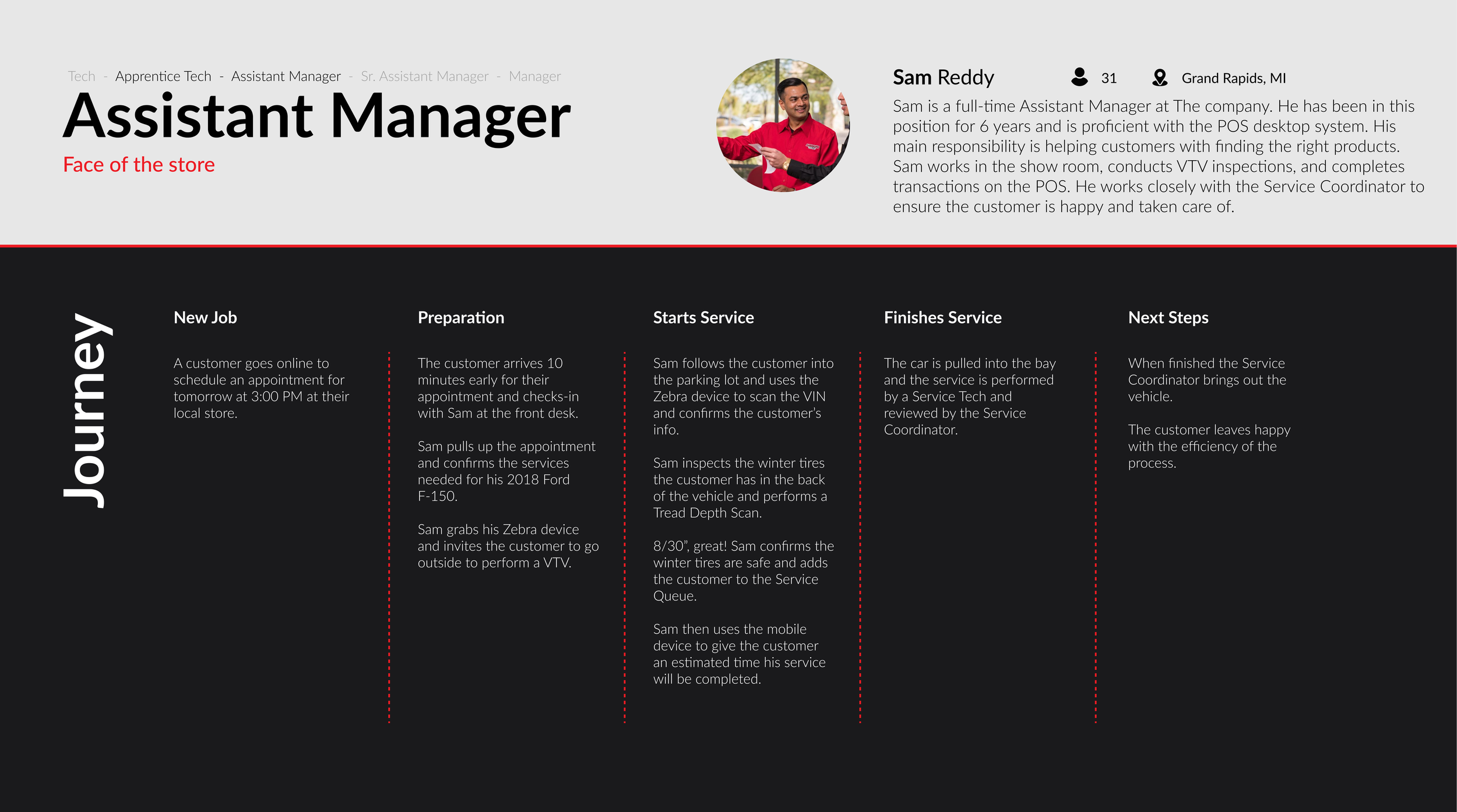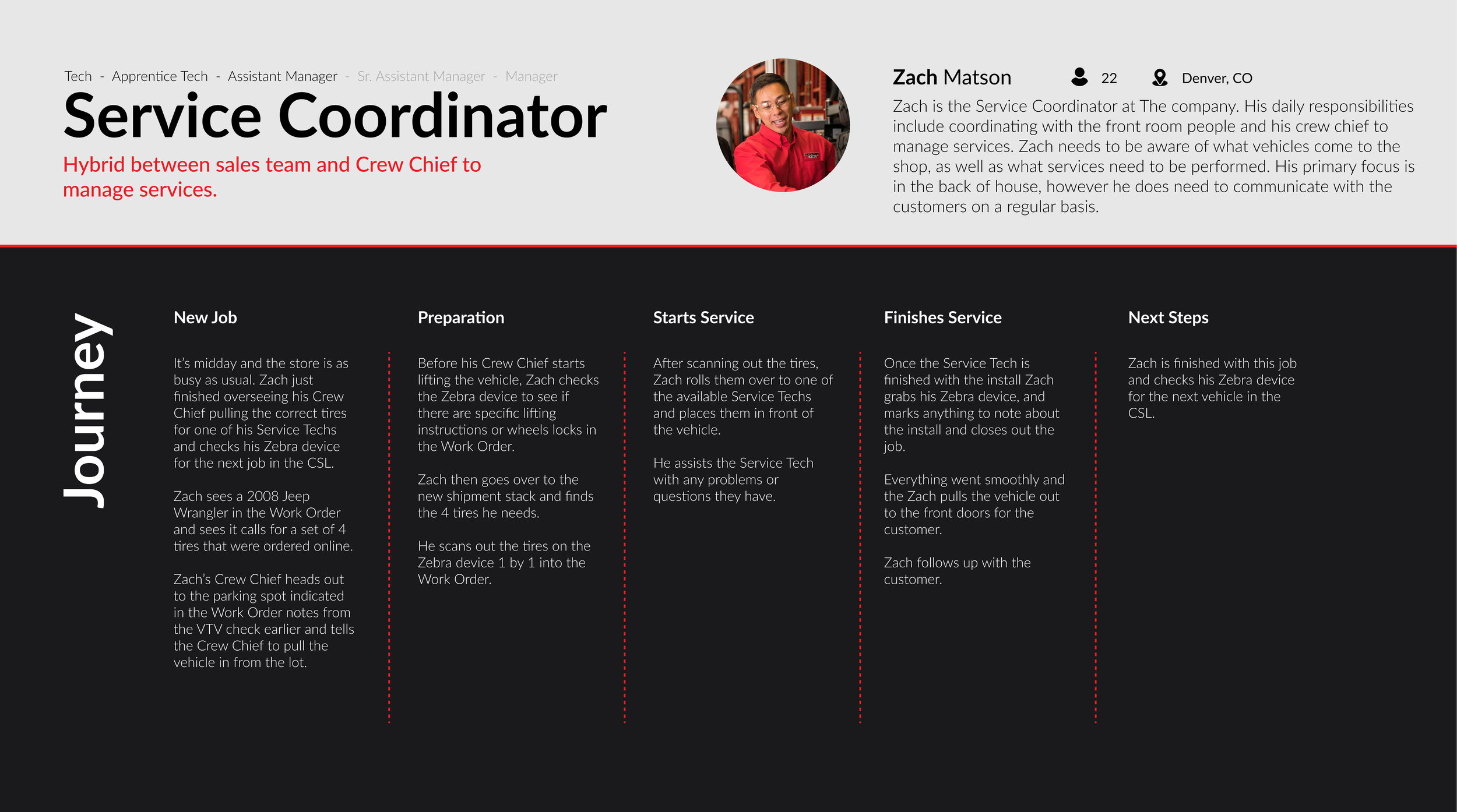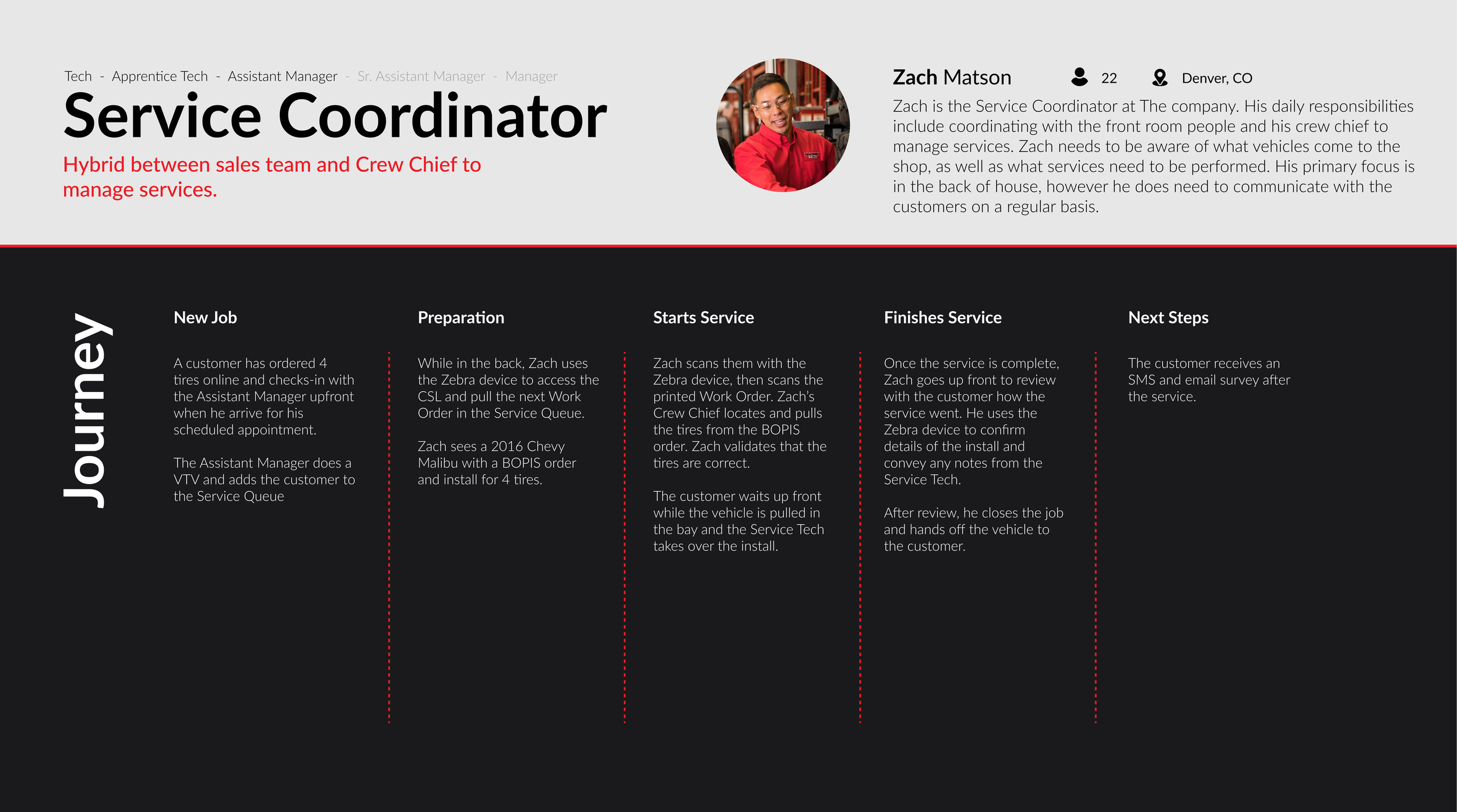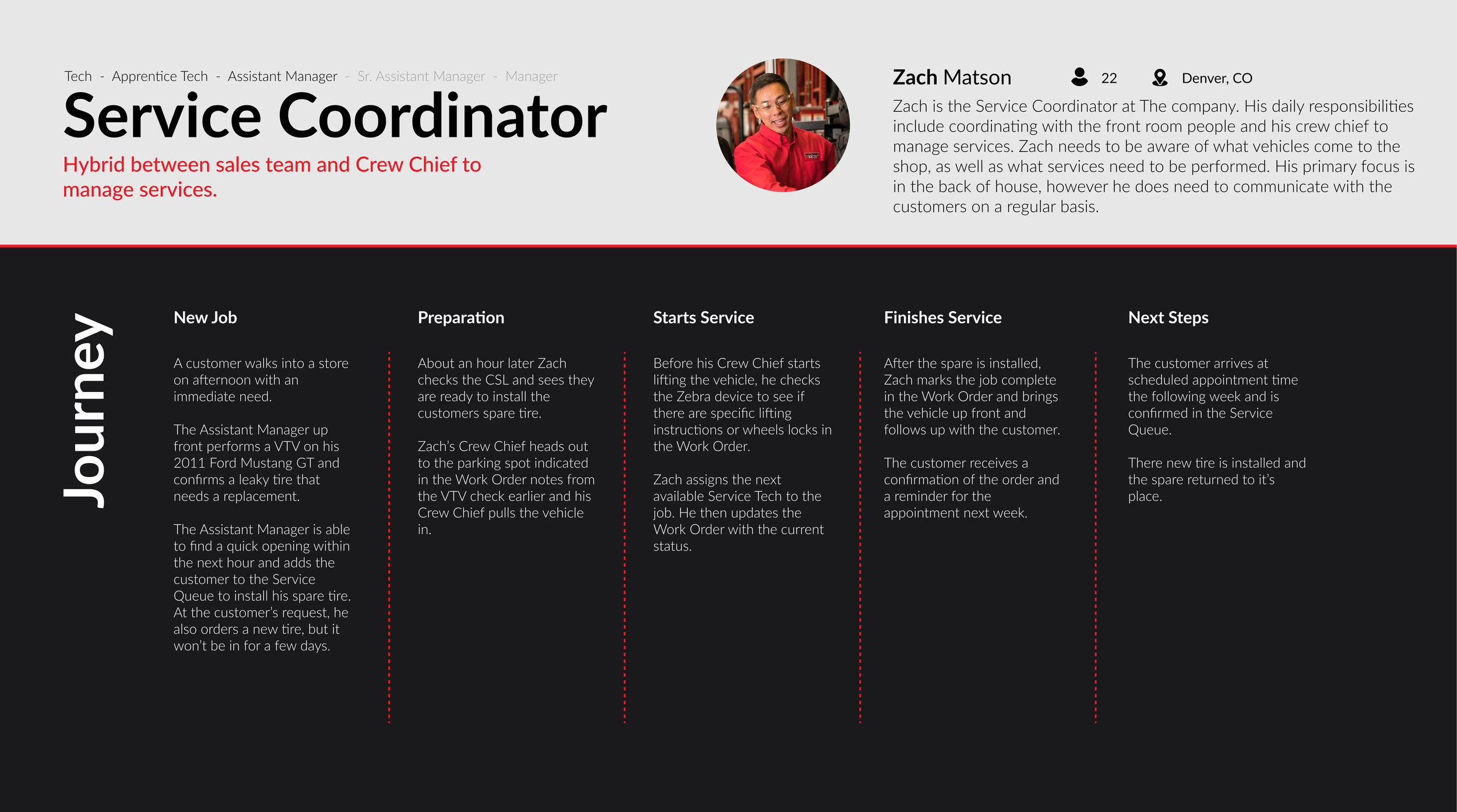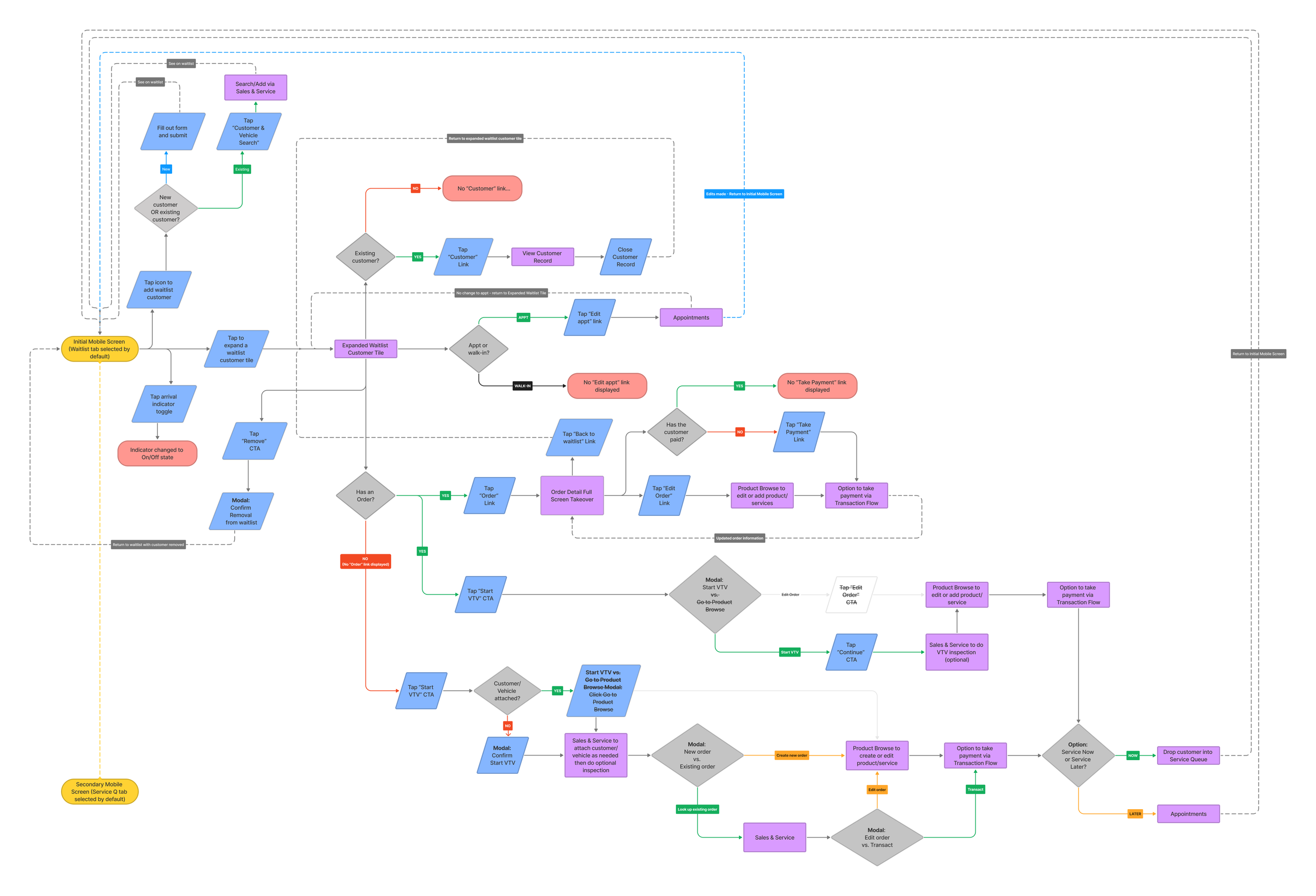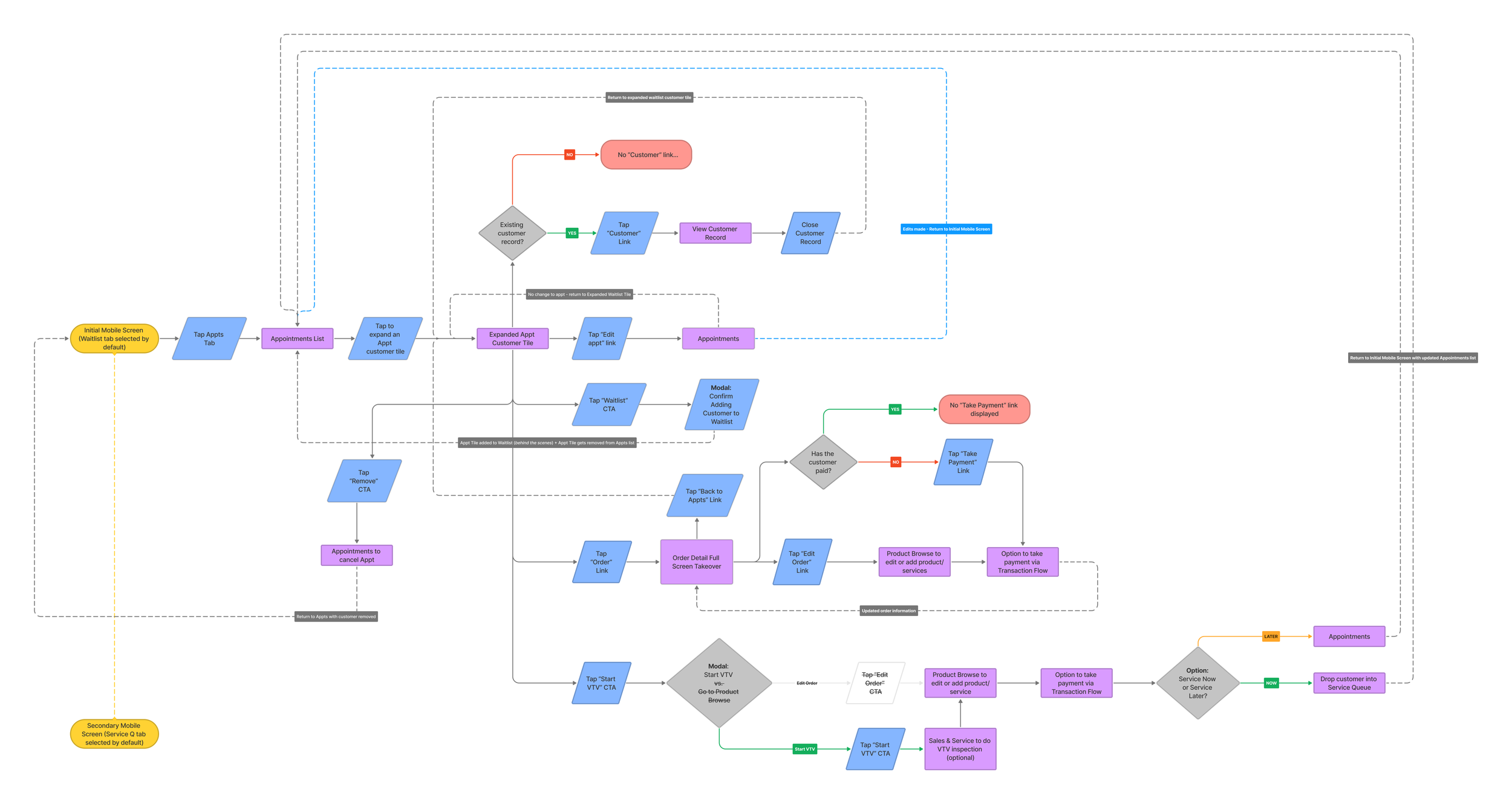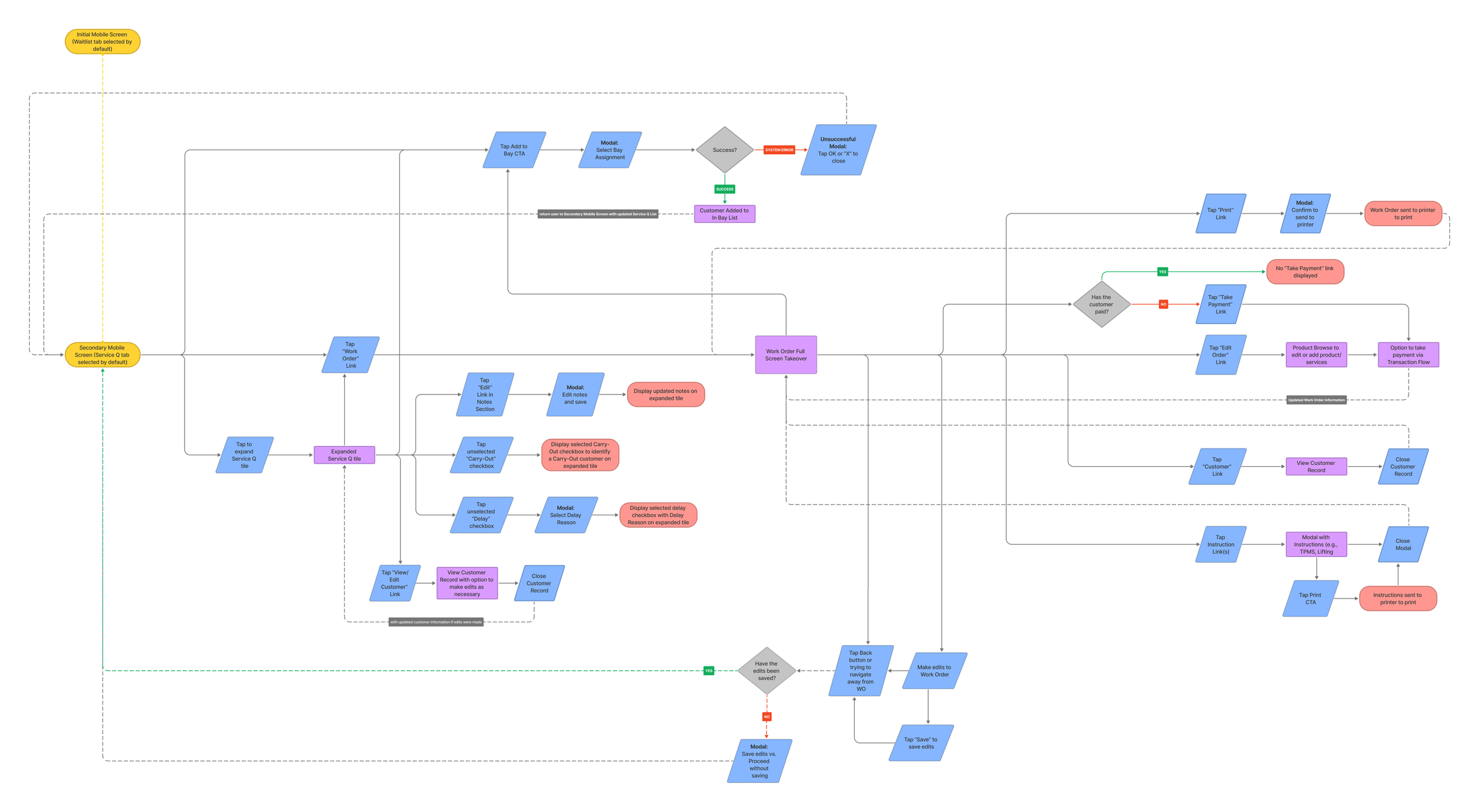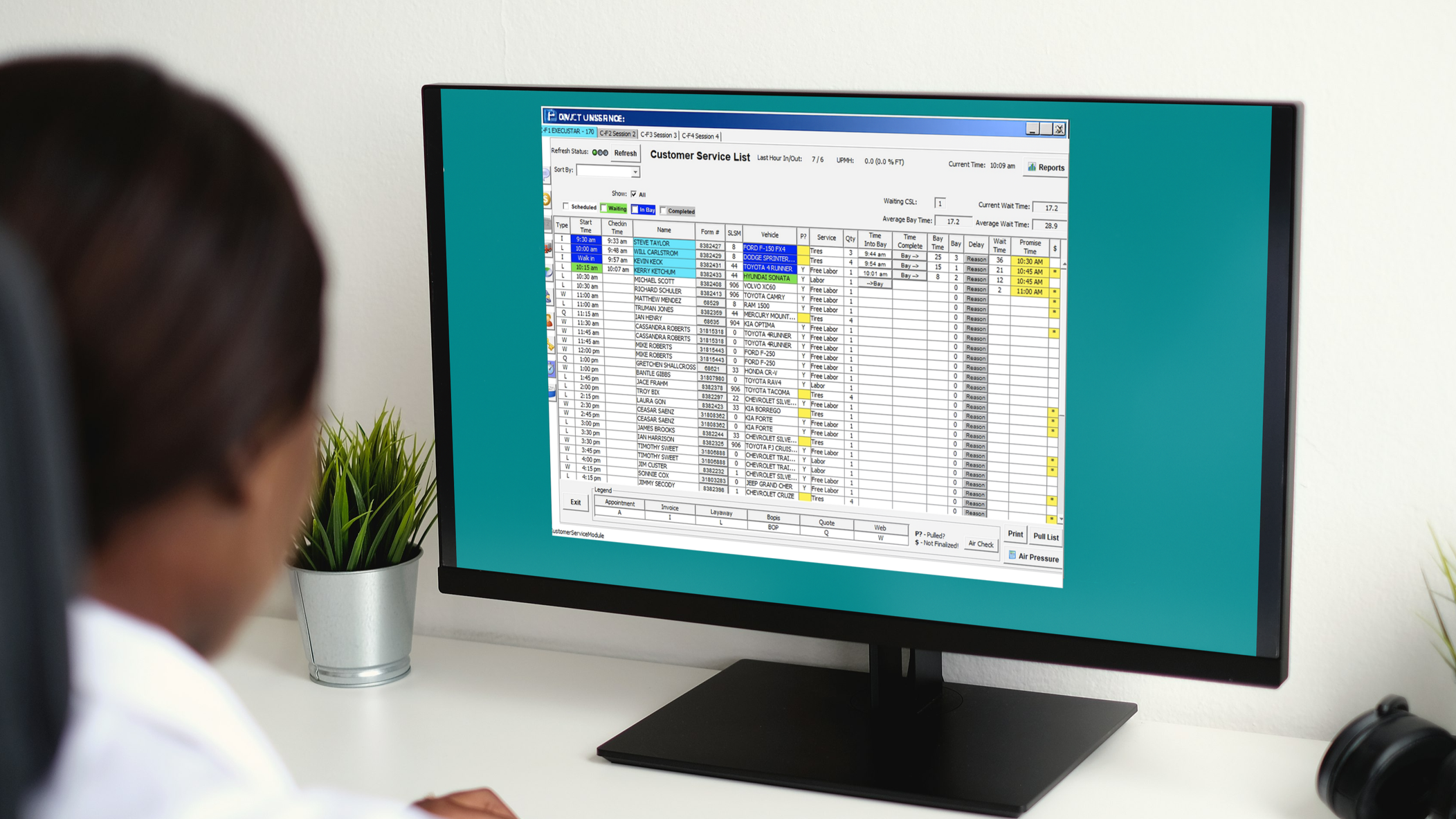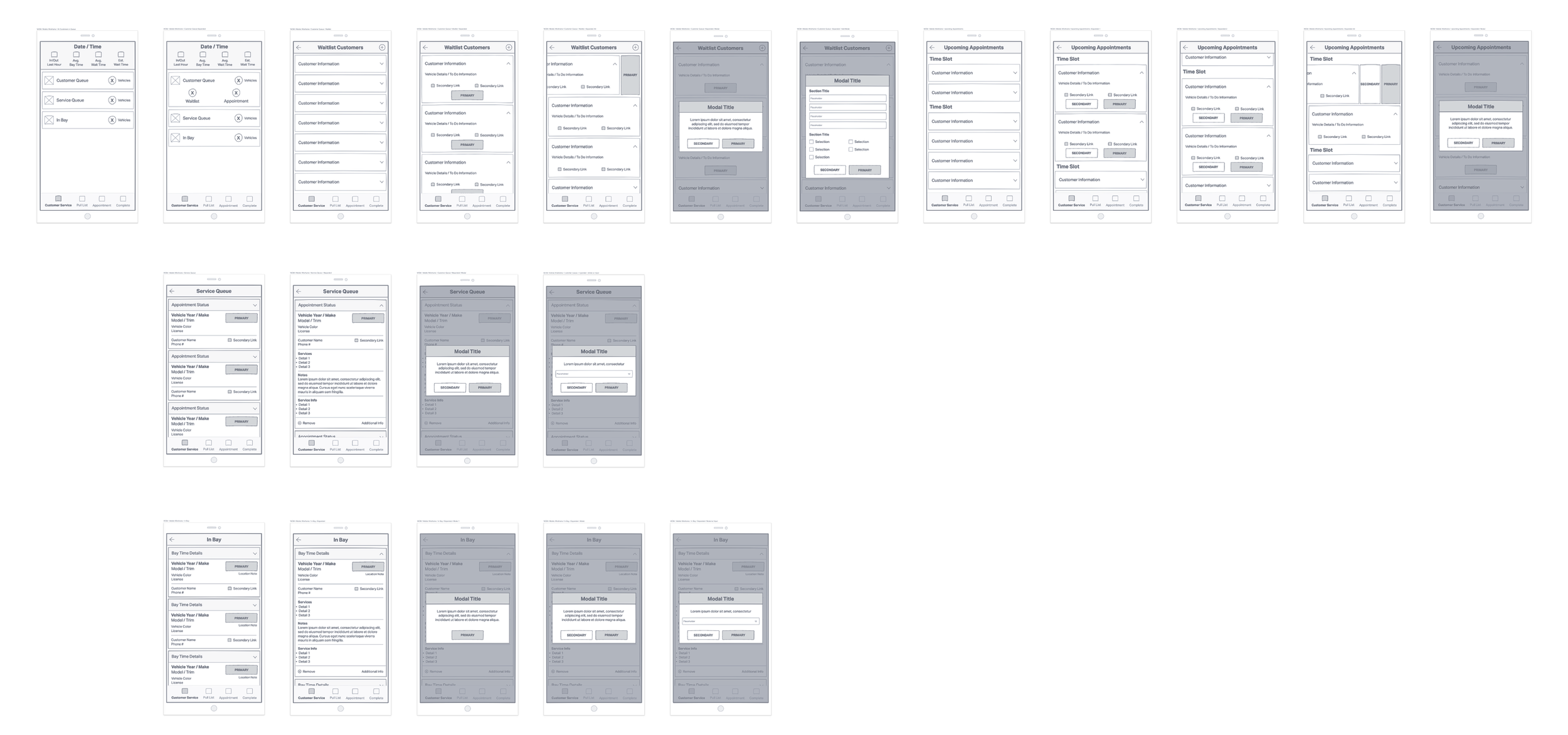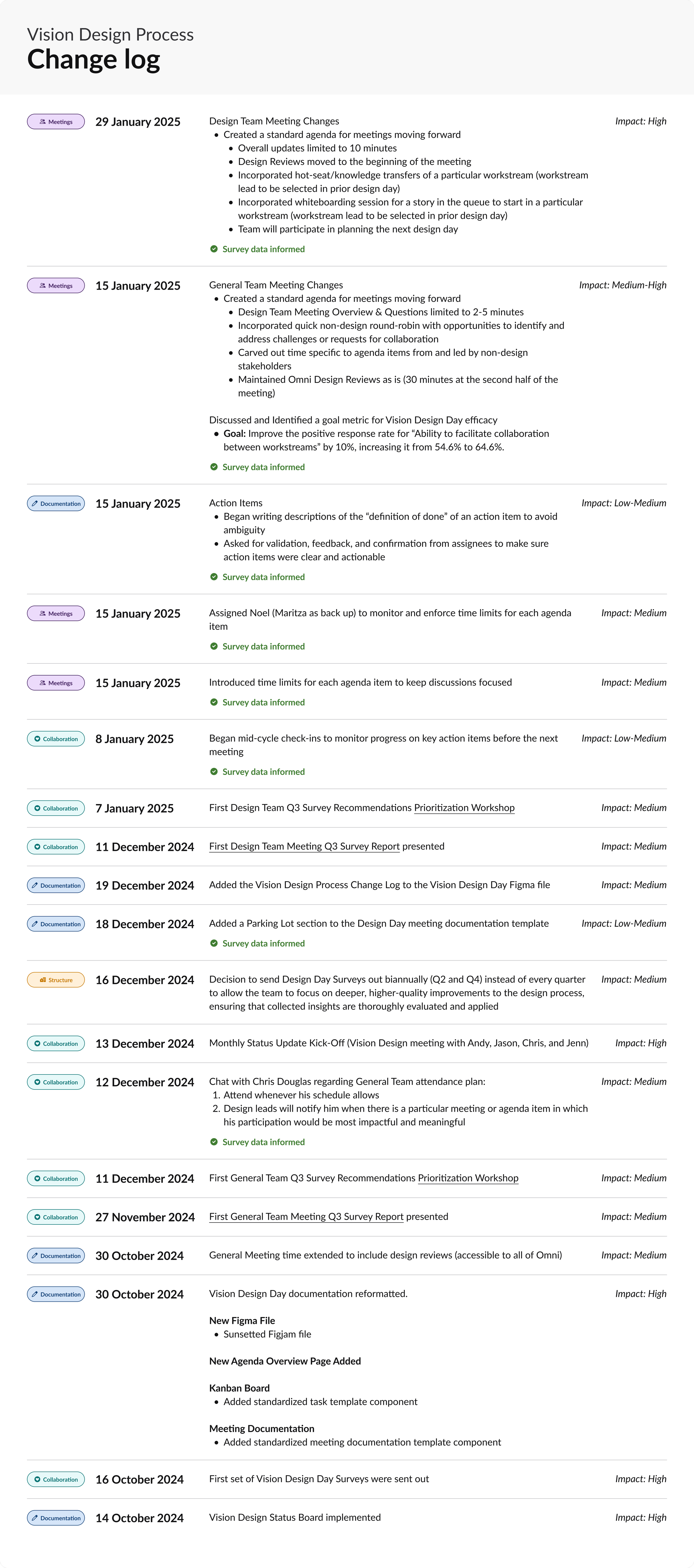
Customer & Service List
Project Summary
The Customer & Service List is the first successful modernization of an outdated, fragmented tire service coordination legacy system. It unifies scheduling, the waitlist, and work order management into a single, intuitive hub for managers, sales associates, and service technicians. Designed for both desktop and mobile devices, it increases efficiency, enhances productivity, and empowers employees to deliver faster, higher-quality service. Additionally, with the upcoming rollout of the new mobile POS, employees are expected to be able to check customers in, generate work orders, scan tread depth, and take payment right from the parking lot, accelerating service, reducing in-store congestion, and improving the overall customer experience.
Discover & Define
Requirements Gathering & Refinement
To ensure the Customer & Service List would meet real-world needs across store roles, we led a cross-functional effort to define and refine UX requirements before any design work began.
Initial Inputs
Existing standard operating procedures
Field trainer feedback from pilot stores
Operational pain points from legacy POS
Business needs and KPIs
Refinement Process
Workshops with Product, Dev, Ops, and UX to map task flows and identify overlaps
Iterative requirement reviews with engineers and store experts to validate feasibility
Version-controlled documentation to keep up with shifting priorities and platform constraints
Outcome
A tightly scoped, prioritized UX requirement set that:
Aligned across business, tech, and user needs
Translated directly into design artifacts and user flows
Enabled quicker stakeholder buy-in and reduced late-stage churn

Design Challenges
Fragmented Service Workflows
Before: Key tasks like check-in, bay assignment, and service updates were scattered across disconnected tools.
Challenge: Unifying these disconnected tools into a single, coherent interface that worked across teams (Sales, Tech, and Management) without overwhelming users.
Limited Visibility Into Service Progress
Before: The legacy system had little context around vehicle location, promise times, or queue status.
Challenge: Design a clear, real-time view of service progress to support faster decisions, reduce bottlenecks, and align expectations across roles.
Designing for the New Mobile POS
Before: Legacy tools were desktop-only and couldn’t support emerging workflows like mobile check-in, outdoor service, or in-bay updates.
Challenge: Build a system flexible enough to support both desktop operations and future mobile POS experiences, while maintaining clarity and consistency.
User Personas
User Journeys
User Flows
Competitive Analysis
To inform the redesign of the Customer & Service List, I reviewed leading automotive and service workflow platforms. This helped identify best practices in queue management, scheduling, and task coordination, as well as gaps our solution needed to address.
-
Cloud-based auto repair shop management software for scheduling, invoicing, and workflows
Strengths: Modern UI, role-based dashboards, strong scheduling and invoicing features
Gaps: Built for small–mid size shops, less proven at enterprise scale
-
Shop management system for repair orders, inspections, and reporting
Strengths: Easy-to-use interface, digital vehicle inspections, good reporting
Gaps: Interface can feel heavier in high-volume workflows, fewer enterprise rollouts
-
Longstanding repair shop software for repair orders, estimating, and service management
Strengths: Trusted name in the industry, robust repair/estimating features
Gaps: Outdated UI, less mobile support, longer onboarding curve
-
Dealership management platform covering inventory, finance, sales, and service
Strengths: Comprehensive features across dealership operations
Gaps: Broad focus, less tailored to frontline service workflows
Key Takeaways
Simplicity and hierarchy accelerate task assignment and reduce training.
Mobile-first workflows remain a competitive gap — especially in high-volume retail service environments.
Real-time visibility into appointments, queues, and service progress is often fragmented in competitor tools, creating inefficiencies.
Consistency across platforms (desktop and mobile) is rarely addressed, leaving room for errors and retraining.
Scalability is a challenge for many competitors, who are built for smaller repair shops rather than enterprise-level rollout.
Modern UI patterns are still not the standard across the industry, which slows onboarding and increases learning curves.
Create & Evaluate
Desktop
Before & After
Before: Legacy POS
The legacy POS system relied on fragmented tools, inefficient workflows, and an outdated interface. This made it difficult for store teams to assign tasks, track service progress, and respond quickly in fast-paced environments.
-
Technicians and managers had to jump between separate systems to manage appointments, work orders, and bay tracking. This created duplicated effort, inconsistent data, and frequent miscommunication between the front room and back room.
-
High-frequency tasks such as assigning a job or updating a vehicle’s status often required several clicks across different screens. These extra steps slowed service, created bottlenecks, and increased wait times for customers.
-
The legacy UI had poor information hierarchy, inconsistent visual patterns, and small, hard-to-tap controls. Under time pressure, this led to errors, slower decision-making, and extended onboarding for new staff.
Mid-Project:
Mid-fidelity Desktop POS
The mid-fidelity prototype introduced a clearer visual hierarchy, simplified key workflows, and laid the foundation for a unified service experience. It focused on reducing friction and aligning UX patterns across tools.
-
Common tasks like technician assignment, status updates, and bay selection were reorganized into intuitive step-by-step flows. This cut down task time and made the system easier to learn for new employees.
-
The new layout grouped related actions and introduced consistent spacing, headings, and iconography. Important information like appointment times, bay assignments, and status indicators became easier to scan at a glance.
-
This mid-fidelity version established reusable design patterns across the Work Order Management suite. These scalable components helped reduce cognitive load and prepared the system for future mobile adaptation.
After: High-fidelity Desktop POS
The high-fidelity design transformed the Customer & Service List into a modern, user-friendly dashboard. It enabled real-time visibility into customers, vehicles, and services while streamlining task assignment and coordination between front-room and back-room teams.
-
Live data displays let teams track scheduled appointments, customer waitlists, and in-progress work orders at a glance. This visibility helped reduce miscommunication, speed up decision-making, and keep services on track.
-
Consistent formatting, iconography, and promise-time alignment help employees focus on what’s most urgent. Subtle but deliberate use of color and structure eliminates guesswork and supports rapid action without relying on memory or verbal coordination. Additionally, sales associates and managers can now confidently route work without digging through multiple screens.
-
Though touch interaction isn’t supported on desktop, the visual and structural system was intentionally designed to inform mobile development. Shared components and hierarchy ensure design intent carries through and accommodates expanded functionality as mobile versions are rolled out.
Mobile
Before & After
Before:
No Legacy POS Mobile Experience
There was no mobile-compatible version of the Customer & Service List before this project. Store employees were tethered to desktop POS terminals, which slowed operations and increased congestion inside the store.
-
All check-ins, service assignments, and updates had to happen at the desktop, limiting flexibility and increasing customer wait time.
-
There was no way to initiate service or collect vehicle information without bringing the customer indoors.
-
Mobile updates to service queues, bay availability, and customer progress were not possible in real time.
Mid-Project: Mobile Wireframes
Initial wireframes explored how the mobile POS device could support key CSL functions from the parking lot including check-in, service initiation, and real-time queue monitoring.
-
Designed for check-in to begin at the car, reducing friction for both customers and staff.
-
Prioritized just the core actions (e.g. add to queue, assign service) to streamline MVP development.
-
Incorporated early feedback from in-store roles to inform interaction patterns and hierarchy.
After: High-Fidelity Mobile POS
The mobile version of the Customer & Service List delivers an intuitive, touch-optimized experience. It enables real-time queue visibility, streamlined check-ins, and service initiation — all from the parking lot. Currently in phased development and planned for rollout after desktop.
-
Team members can view and manage the waitlist, appointment queue, service queue, and in-bay list all from the palm of their hand. This enhances visibility and responsiveness, even when moving between the front of house and service bays.
-
Employees can check in customers, scan VINs, validate vehicle details, and start work orders on the spot. Parking lot check-ins reduce indoor congestion and give customers a smoother, faster experience.
-
The mobile interface adopts the same structure and component library as the desktop POS, ensuring consistency while optimizing for touch and on-the-go interaction. It lays the foundation for mobile-first workflows as adoption expands.
Evaluate
In this phase, I pushed for structured checkpoints to validate and refine our work. One key practice was Design Day a biweekly, three-hour working session that brought together all major stakeholders from UX, Product, Engineering, and the Store Experience team.
These sessions created space to walk through flows, surface usability issues, and refine both designs and requirements in real time. By including the Store Experience team, we ensured every decision reflected field realities and the needs of technicians. This collaborative evaluation reduced rework downstream and gave the entire group a shared sense of ownership in the solution.
Results
Currently in the Implementation Phase
Reduced complexity: Cut key workflows from 6–8 clicks down to 3–4, speeding up task completion.
Central hub: Centralized appointments, waitlists, and service queues into one dashboard, reducing miscommunication across roles.
Employee efficiency: Helped managers and associates assign tasks faster and gave technicians clearer context, reducing idle time.
Customer experience: Will introduce upcoming mobile workflows for parking-lot check-in, tread scanning, and payments, reducing congestion inside the store.
Enterprise impact: Rolled out to 546 stores as of August 2025 (desktop), with phased mobile deployment in progress to support 25,000+ employees across 1,100+ locations.
